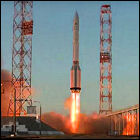 Russia launches the Nauka Multipurpose Logistics Module Upgrade component of the International Space Station. Part of the original design for the ISS, Nauka was built in time to be launched in 2007, but its addition to the station was repeatedly delayed, missing planned launch windows in 2009, 2013, 2015, 2017, 2019, and 2020. Parts of Nakua required upgrades and replacements over the years that it awaited launch, as these parts began to fail certification due to their age. (Much of the module was 14 years old before it ever made it to the launch pad.) Nakua, designed to automatically rendezvous and dock with the station, begins encountering technical problems once it is in orbit, delaying the docking maneuver. It replaces the Russian Pirs module, which becomes the first ISS module to be detached and allowed to re-enter Earth’s atmosphere.
Russia launches the Nauka Multipurpose Logistics Module Upgrade component of the International Space Station. Part of the original design for the ISS, Nauka was built in time to be launched in 2007, but its addition to the station was repeatedly delayed, missing planned launch windows in 2009, 2013, 2015, 2017, 2019, and 2020. Parts of Nakua required upgrades and replacements over the years that it awaited launch, as these parts began to fail certification due to their age. (Much of the module was 14 years old before it ever made it to the launch pad.) Nakua, designed to automatically rendezvous and dock with the station, begins encountering technical problems once it is in orbit, delaying the docking maneuver. It replaces the Russian Pirs module, which becomes the first ISS module to be detached and allowed to re-enter Earth’s atmosphere.
 theLogBook.com releases the 26th episode of the Retrogram podcast, hosted by Earl Green, covering the following shows from the weeks of June 20th, 1977:
theLogBook.com releases the 26th episode of the Retrogram podcast, hosted by Earl Green, covering the following shows from the weeks of June 20th, 1977:
 The CW airs the 148th episode of The Flash, a modern-day reboot of DC Comics’ superhero starring Grant Gustin.
The CW airs the 148th episode of The Flash, a modern-day reboot of DC Comics’ superhero starring Grant Gustin.  Streaming service Disney Plus releases the fifth episode of Loki, created for TV by Michael Waldron and starring Tom Hiddleston, Sophia Di Martino, Gugu Mbatha-Raw and Owen Wilson. Richard E. Grant guest stars.
Streaming service Disney Plus releases the fifth episode of Loki, created for TV by Michael Waldron and starring Tom Hiddleston, Sophia Di Martino, Gugu Mbatha-Raw and Owen Wilson. Richard E. Grant guest stars.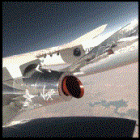 Virgin Galactic’s VSS Unity lifts off from Spaceport New Mexico on its first fully-crewed flight with passengers, including Virgin Galactic founder/owner Richard Branson, Virgin Galactic’s Beth Moses (who flew aboard a previous flight), Sirisha Bandla, and Colin Bennett, with veteran Virgin Galactic pilots David Mackay and Michael Masucci at the vehicle’s controls. The flight is suborbital only, but does earn the rookies among its crew their commercial astronaut wings. The flight was only announced at the beginning of July, where some observers interpreted the announcement as an attempt to upstage the previous announcement that Jeff Bezos’ Blue Origin would be flying a fully crewed New Shepard capsule on July 20th. Independent flight of Unity lasts approximate 14 minutes, from drop/booster ignition from its carrier aircraft to landing (total time in both air and space for those aboard is approximately 58 minutes, from takeoff of the carrier aircraft to Unity‘s touchdown on the runway). (The flight system of carrier aircraft and air-dropped spacecraft was established almost exactly 17 years earlier in
Virgin Galactic’s VSS Unity lifts off from Spaceport New Mexico on its first fully-crewed flight with passengers, including Virgin Galactic founder/owner Richard Branson, Virgin Galactic’s Beth Moses (who flew aboard a previous flight), Sirisha Bandla, and Colin Bennett, with veteran Virgin Galactic pilots David Mackay and Michael Masucci at the vehicle’s controls. The flight is suborbital only, but does earn the rookies among its crew their commercial astronaut wings. The flight was only announced at the beginning of July, where some observers interpreted the announcement as an attempt to upstage the previous announcement that Jeff Bezos’ Blue Origin would be flying a fully crewed New Shepard capsule on July 20th. Independent flight of Unity lasts approximate 14 minutes, from drop/booster ignition from its carrier aircraft to landing (total time in both air and space for those aboard is approximately 58 minutes, from takeoff of the carrier aircraft to Unity‘s touchdown on the runway). (The flight system of carrier aircraft and air-dropped spacecraft was established almost exactly 17 years earlier in 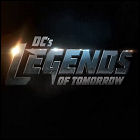 The CW airs the 91st episode of Legends Of Tomorrow, starring Caity Lotz, Matt Ryan, Jes Macallan, and Tala Ashe.
The CW airs the 91st episode of Legends Of Tomorrow, starring Caity Lotz, Matt Ryan, Jes Macallan, and Tala Ashe. The CW airs the 12th episode of Superman & Lois, starring Tyler Hoechlin, Elizabeth Tulloch, Jordan Elsass, and Alex Garfin.
The CW airs the 12th episode of Superman & Lois, starring Tyler Hoechlin, Elizabeth Tulloch, Jordan Elsass, and Alex Garfin.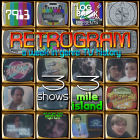
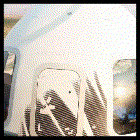 Blue Origin, the private spaceflight company founded and owned by Amazon.com founder Jeff Bezos, launches its first fully-crewed New Shepard capsule into suborbital space. Aboard are Bezos, his brother Mark Bezos, Mercury 13 astronaut candidate Wally Funk (at 82, the oldest human to have traveled in space to date), and Oliver Daemen (at 18, the youngest human space traveler to date); the vehicle is fully automatic and has no pilots (or, indeed, control systems for pilots) aboard, with the flight lasting ten minutes from liftoff to landing under parachute. This is the first crewed spaceflight launched from Blue Origin’s Texas facility. As both the New Shepard booster and crew capsule are reusable, the hardware has all been previously flown.
Blue Origin, the private spaceflight company founded and owned by Amazon.com founder Jeff Bezos, launches its first fully-crewed New Shepard capsule into suborbital space. Aboard are Bezos, his brother Mark Bezos, Mercury 13 astronaut candidate Wally Funk (at 82, the oldest human to have traveled in space to date), and Oliver Daemen (at 18, the youngest human space traveler to date); the vehicle is fully automatic and has no pilots (or, indeed, control systems for pilots) aboard, with the flight lasting ten minutes from liftoff to landing under parachute. This is the first crewed spaceflight launched from Blue Origin’s Texas facility. As both the New Shepard booster and crew capsule are reusable, the hardware has all been previously flown. Russia launches the Nauka Multipurpose Logistics Module Upgrade component of the International Space Station. Part of the original design for the ISS, Nauka was built in time to be launched in 2007, but its addition to the station was repeatedly delayed, missing planned launch windows in 2009, 2013, 2015, 2017, 2019, and 2020. Parts of Nakua required upgrades and replacements over the years that it awaited launch, as these parts began to fail certification due to their age. (Much of the module was 14 years old before it ever made it to the launch pad.) Nakua, designed to automatically rendezvous and dock with the station, begins encountering technical problems once it is in orbit, delaying the docking maneuver. It replaces the Russian Pirs module, which becomes the first ISS module to be detached and allowed to re-enter Earth’s atmosphere.
Russia launches the Nauka Multipurpose Logistics Module Upgrade component of the International Space Station. Part of the original design for the ISS, Nauka was built in time to be launched in 2007, but its addition to the station was repeatedly delayed, missing planned launch windows in 2009, 2013, 2015, 2017, 2019, and 2020. Parts of Nakua required upgrades and replacements over the years that it awaited launch, as these parts began to fail certification due to their age. (Much of the module was 14 years old before it ever made it to the launch pad.) Nakua, designed to automatically rendezvous and dock with the station, begins encountering technical problems once it is in orbit, delaying the docking maneuver. It replaces the Russian Pirs module, which becomes the first ISS module to be detached and allowed to re-enter Earth’s atmosphere.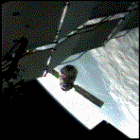 Delayed several days due to technical glitches that occurred after its launch, the Russian Nauka Multipurpose Logisitics Module Upgrade docks with the International Space Station. Some glitches continue to occur during the modules approach and docking phase, with the Russian crew members aboard the station manually intervening when necessary. After docking, however, Nauka’s thrusters begin firing, rotating the station 45 degrees off-axis, eventually exhausting its fuel supply. Once its thrusters are no longer capable of moving the station, the station is restored to its original orientation, with NASA reassuring the public that the event posed no danger to the crew. Some spacewalks will be required to fully connect Nauka’s systems to those of the rest of the station, but it is expected to become the hub of Russia’s research activity aboard the ISS.
Delayed several days due to technical glitches that occurred after its launch, the Russian Nauka Multipurpose Logisitics Module Upgrade docks with the International Space Station. Some glitches continue to occur during the modules approach and docking phase, with the Russian crew members aboard the station manually intervening when necessary. After docking, however, Nauka’s thrusters begin firing, rotating the station 45 degrees off-axis, eventually exhausting its fuel supply. Once its thrusters are no longer capable of moving the station, the station is restored to its original orientation, with NASA reassuring the public that the event posed no danger to the crew. Some spacewalks will be required to fully connect Nauka’s systems to those of the rest of the station, but it is expected to become the hub of Russia’s research activity aboard the ISS.